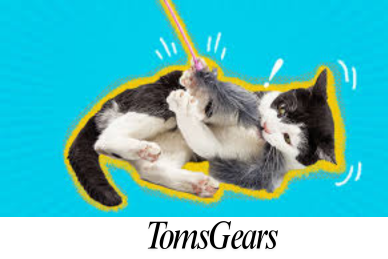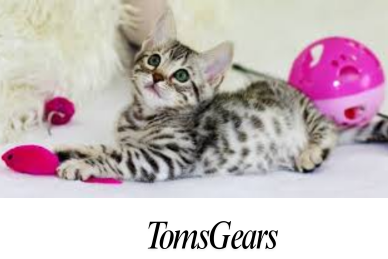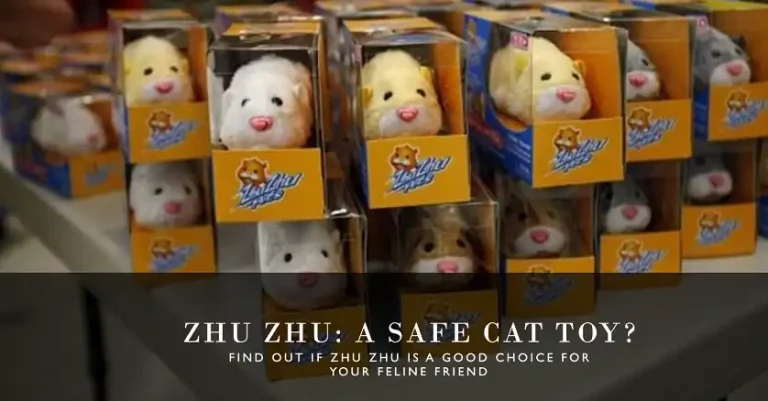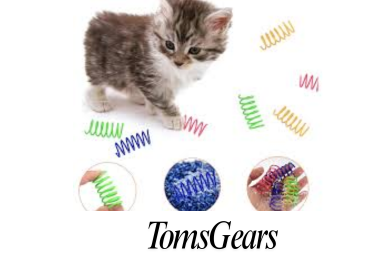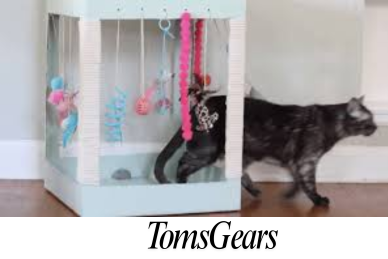Why Does My Cat Carry Around a Toy and Meow?
It was a typical Sunday morning when I heard the familiar pitter-patter of paws and a persistent meowing echoing through the hallway. As I opened my eyes, there was my beloved feline companion, Whiskers, proudly carrying her favorite feather toy in her mouth and announcing her presence with a symphony of meows.
For felines, meowing is a primary communication tool, a complex vocabulary that conveys a wide range of emotions and needs. From high-pitched chirps to drawn-out yowls, each meow variation carries its own unique meaning, offering a window into your cat’s inner world. So, let’s talk about why your feline friend is meowing with a toy in its mouth and what can you do about it.
Why Cats Carry a Toy Around and Meow
Invitation to Play
One of the most common reasons behind your cat’s toy-carrying and meowing antics is a simple, yet irresistible, invitation to playtime. Cats are natural-born hunters, and their play styles often mimic the thrill of the hunt – stalking, pouncing, and capturing their “prey.” From the energetic Bengal to the mischievous Siamese, each breed possesses its own unique play tendencies, and their meows serve as the captivating overture.
How to Respond
Responding positively to these playtime requests not only strengthens the bond between you and your feline friend but also provides them with the mental and physical stimulation they crave. Interactive toys, puzzle feeders, or even a simple string toy can transform a mundane day into an exhilarating adventure for your furry companion.
Practicing Hunting Skills
Even though our beloved cats have evolved into cherished companions, their predatory instincts remain deeply ingrained. The act of carrying a toy and meowing is often a manifestation of this primal urge to hunt. From an evolutionary perspective, this behavior served a vital purpose for their wild ancestors, allowing them to sharpen their hunting skills and secure their survival.
How to Foster Your Cat’s Hunting Skill
As you observe your cat stealthily stalking their plush mouse or feathered prey, you’ll notice how they adapt their “hunting” strategies based on the toy’s design and movement. A soft, squeaky toy might elicit a pouncing attack, while a feather on a string might inspire an intricate dance of swatting and chasing. And throughout this captivating performance, your cat may punctuate their movements with a variety of meows – a low growl to stalk their prey, a triumphant trill upon “capture,” or even a frustrated meow if the hunt proves too elusive.
Sharing the Catch
For many cats, the act of carrying a toy and meowing is akin to a proud hunter sharing their hard-earned catch. This behavior is particularly evident in mother cats, who instinctively teach their kittens the art of hunting by bringing them “prey” and encouraging play. But even male cats, or those without kittens, may exhibit this endearing trait, a testament to the depth of their bond with their human companions.
How to Play Along
To foster this special connection, consider investing in interactive toys that allow you to participate in the “hunt” together. From wand toys that mimic the movement of prey to treat-dispensing puzzles that reward your cat’s efforts, these engaging playtime activities not only provide mental and physical stimulation but also strengthen the unbreakable bond between you and your furry friend.
Seeking Attention
While play is a common motivator behind your cat’s toy-carrying and meowing, this behavior can also be a cry for attention and affection. Cats are social creatures, and each breed has its own unique way of handling solitude. Some may thrive on their own, while others crave near-constant companionship. If your feline friend feels lonely or neglected, they may resort to carrying a toy and meowing as a way to get your attention.
How to Give Your Cat More Attention
If you suspect your cat is seeking attention, it’s essential to respond positively and address their needs. This might involve increasing playtime, providing additional enrichment activities, or even considering introducing another feline companion if appropriate for your household. Remember, each cat is unique, and the key lies in tailoring your approach to their individual personality and needs.
It’s Bored
Lack of stimulation is another common reason behind your cat’s toy-carrying and meowing antics. Cats are intelligent, curious creatures with diverse enrichment needs that vary based on their breed and activity levels. When their environment fails to provide adequate mental and physical engagement, they may resort to this behavior as a means of alleviating boredom.
How to Combat Boredom
To combat boredom, think beyond traditional toys and explore creative environmental enrichments tailored to your cat’s unique personality and interests. Vertical spaces, like cat trees or shelves, can provide ample opportunities for climbing and perching. DIY foraging stations or puzzle feeders can stimulate their natural hunting instincts while encouraging physical activity. You could even explore cat-friendly apps or videos designed to engage their senses and pique their curiosity.
Medical Considerations
While excessive toy-carrying and meowing is often a harmless and natural behavior, it’s essential to be aware of potential underlying medical issues that may require veterinary attention. Sudden changes in vocal quality, frequency, or behavior patterns could be early warning signs of an underlying condition.
Why Seek Professional Assessment
While medical causes are relatively rare, it’s always better to err on the side of caution. If you notice any concerning changes in your cat’s behavior or vocalizations, don’t hesitate to schedule an appointment with your trusted veterinarian. They can provide a professional assessment and rule out any potential underlying health problems, ensuring your feline companion remains happy, healthy, and able to meow to their heart’s content.
Frequently Asked Questions
Is it safe for my cat to carry toys around?
In most cases, yes – carrying toys is a natural and harmless behavior for cats. However, it’s important to supervise playtime and ensure the toys are safe and free from small, detachable parts that could pose a choking hazard if ingested. Additionally, avoid toys with strings or ribbons that could become tangled around your cat’s neck or limbs.
Why does my cat only carry around certain toys?
Cats can develop strong preferences for specific toys based on various factors, such as texture, scent, or the way the toy moves or makes noise. They may also associate particular toys with positive experiences or feelings, leading to a stronger attachment. It’s perfectly normal for your cat to have a favorite toy or two.
Should I be concerned if my cat meows excessively while carrying toys?
Excessive meowing can sometimes indicate an underlying medical issue, but it’s often just a quirky expression of your cat’s personality or a way to get your attention. If the meowing seems excessive or unusual, and your cat exhibits other concerning behaviors, it’s best to consult your veterinarian to rule out any potential health problems.
How can I encourage my cat to play with toys more often?
Rotating toys regularly, providing interactive playtime, and offering a variety of toys that cater to your cat’s natural hunting instincts can encourage more frequent and engaged play. Additionally, consider incorporating food puzzles or treat-dispensing toys to stimulate their mind and tap into their foraging instincts.
My cat seems bored and carries toys around a lot. What can I do?
If your cat’s toy-carrying behavior seems excessive and accompanied by signs of boredom (e.g., excessive meowing, destructive behavior), it’s essential to provide more environmental enrichment. Offer vertical spaces for climbing, introduce puzzle feeders, and explore DIY foraging stations or cat-friendly apps to stimulate their mind and body.
Summary
Remember, every cat is unique, and their quirky behaviors are part of what makes them so endearing. By understanding the underlying reasons behind their toy-carrying and meowing antics, you can strengthen your bond, meet their needs, and appreciate the depth of their feline charm.


